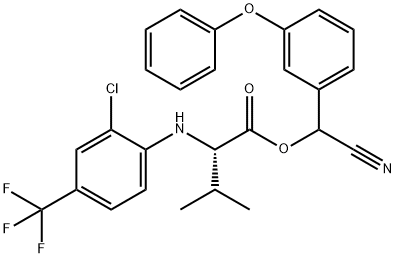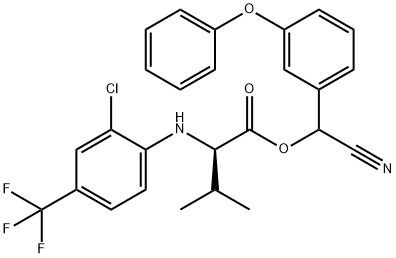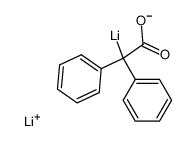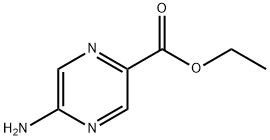If lithium levels in the brain are significantly lower in people with Alzheimer’s, could this mineral actually play a protective role we’ve overlooked? Why does lithium deficiency seem to worsen amyloid plaques, tau tangles, and brain inflammation? Could amyloid plaques be trapping lithium, making the problem even worse? And if certain lithium salts can restore brain immune function in mice, is there hope for a safe, effective human treatment? What would be the right form and dosage of lithium for prevention or therapy?
Could Low Lithium in the Brain Be the Hidden Trigger Behind Alzheimer’s?
Related Encyclopedia
- 14885-65-5
- FLi
- 25.01350
- All (0)
- China (0)
- (0)
![[PSER422]-TAU](https://chemcloud-1304660855.cos.ap-shanghai.myqcloud.com/compound/202502112256190729.gif)
- 25759-28-8
- C102H154N30O33S4
- 2456.77
- All (0)
- China (0)
- (0)

- 69409-94-5
- C26H22ClF3N2O3
- 502.91
- All (2)
- China (0)
- (2)

- 102851-06-9
- C26H22ClF3N2O3
- 502.91
- All (2)
- China (0)
- (2)
- 12596-44-0
- Li2
- 13.03110
- All (2)
- China (2)
- (2)
- 12596-45-1
- Li2
- 14.03200
- All (2)
- China (2)
- (2)

- 17341-24-1
- Li+
- 6.94
- All (2)
- China (2)
- (2)
- 12596-43-9
- Li2
- 12.03020
- All (2)
- China (2)
- (2)
- 849949-18-4
- C17H16N4O4S
- 372.39800
- All (0)
- China (0)
- (0)

- 60538-71-8
- C14H10Li2O2
- 224.11000
- All (0)
- China (0)
- (0)
Related Products More >
-
- CNY Request For Quotation
-
- CNY Request For Quotation
-
- CNY Request For Quotation
-
- 554-13-2
- CNY 60.0000
- 25kg
-
- 107-35-7
- CNY 15.0000
- 25kg
-
- 7447-41-8
- USD 6.0000
- 25kg
-
- 7447-41-8
- USD 6.0000
- 1kg
-
- 14283-07-9
- Request For Quotation
- 25kg


 沪ICP备2021018848号-5
沪ICP备2021018848号-5


Some lithium salts, like lithium orotate, seem to help restore brain immune function in mice, which is really promising. But not all lithium compounds work the same—lithium carbonate tends to get stuck in those plaques, so it might not be as helpful. The big question now is whether we can find a form of lithium that safely avoids being trapped and can be given to people to help prevent or slow down Alzheimer’s. We also need to figure out the right dose, because too much lithium can be toxic.
Overall, there’s hope lithium could be part of future treatments, but it’s important to wait for human trials before trying anything. We still don’t know if lithium levels naturally drop as people age or what the ideal daily intake should be.
Amyloid plaques seem to trap lithium, creating a vicious cycle. As more amyloid accumulates, more lithium is trapped, exacerbating the deficiency and weakening microglia's ability to clear amyloid. This multi - system degeneration is a key mechanism for dementia.
Among lithium salts, lithium carbonate, used for mood disorders, is easily trapped in amyloid plaques due to its chemical structure and charge properties. In contrast, lithium orotate has a lower affinity for amyloid. In mice, lithium orotate restored microglia's amyloid - degrading ability, showing promise for treatment.
Unlike other metals like zinc and copper, which also show altered levels in Alzheimer's, lithium's role is more directly related to enzymatic regulation and immune cell function.
A potential misunderstanding is that high - dose lithium is beneficial. However, high levels are toxic, causing intestinal and neurological symptoms. The right form (such as lithium orotate) and a safe, low - supplemental dosage need to be determined through clinical trials. This research opens up new avenues for Alzheimer's treatment, focusing on a mineral's physiological role rather than just drug - based approaches.
Among lithium salts, lithium orotate shows promise. Unlike lithium carbonate (trapped in plaques), it has low affinity for amyloid. In mice, it restored microglia’s ability to degrade amyloid. However, clinical use requires caution—high doses are toxic. Questions remain: optimal dosage, whether aging lowers lithium levels, and if it’s essential. Still, lithium orotate’s potential in trials suggests a path to safe, effective treatments.